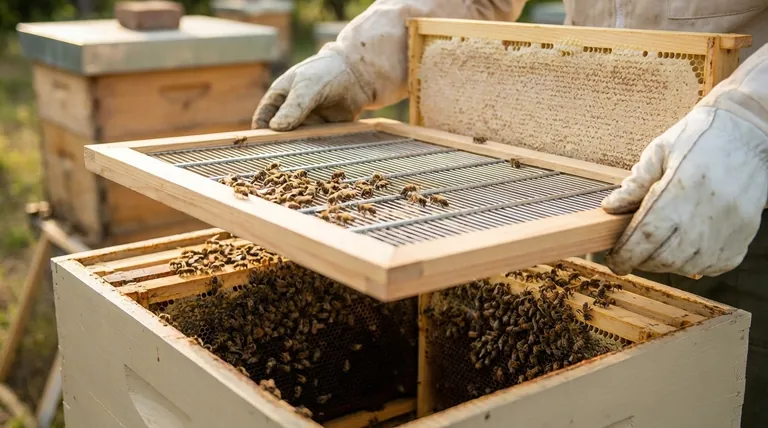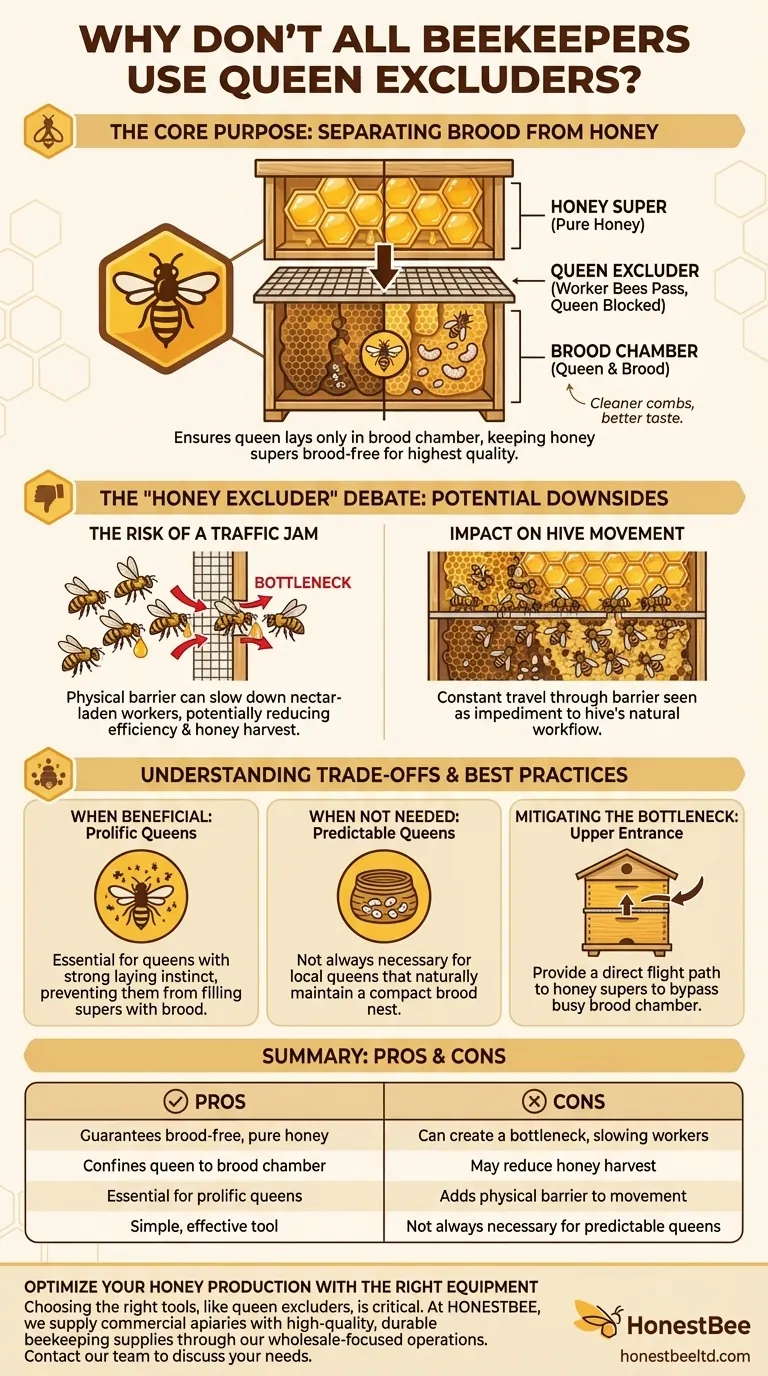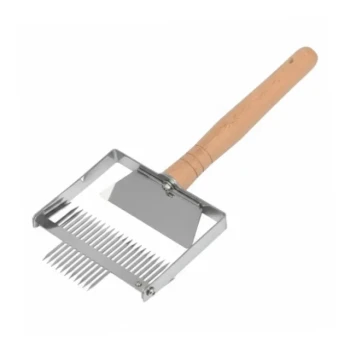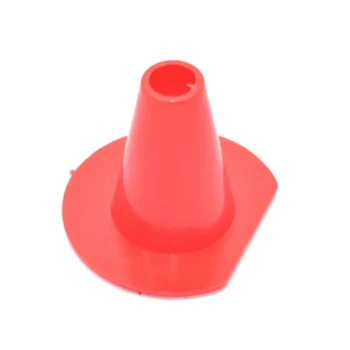The use of a queen excluder is one of the most debated topics in beekeeping. Not all beekeepers use them because of a significant potential drawback: the belief that they can slow down worker bees, acting as a bottleneck that reduces the speed at which honey supers are filled. For this reason, some beekeepers jokingly refer to the tool as a "honey excluder."
The decision to use a queen excluder is not a matter of right or wrong, but a strategic trade-off. It balances the goal of pristine, brood-free honey against the risk of potentially impeding hive productivity. The correct choice depends entirely on your management style, your goals, and your specific colony's behavior.

The Core Purpose: Separating Brood from Honey
Why Separation Matters
The primary function of a queen excluder is to confine the queen to the lower hive boxes, known as the brood chamber. This ensures she only lays eggs there, dedicating the upper boxes (honey supers) exclusively for honey storage.
Honey harvested from frames that have never contained brood is considered the highest quality. When eggs hatch, the remaining cocoons, larval debris, and bee feces can stain the comb a dark brown, which can affect the purity and taste of the honey.
How the Excluder Works
The tool itself is a simple grid or screen. The openings are precisely sized to allow the smaller worker bees to pass through freely while blocking the larger queen and male drones from moving into the honey supers.
The "Honey Excluder" Debate: Potential Downsides
The Risk of a Traffic Jam
The central argument against using an excluder is that it creates a physical barrier. Worker bees, laden with nectar, may have to struggle to pass through the grid.
This perceived slowdown can create a bottleneck, potentially reducing the overall efficiency of the colony and leading to a smaller honey harvest than might otherwise be possible.
The Impact on Hive Movement
Foraging bees must navigate through the excluder every time they move between the brood nest and the honey supers. This constant travel through the barrier is seen by some as an unnecessary impediment to the hive's natural workflow.
Understanding the Trade-offs and Best Practices
When an Excluder is Most Beneficial
Colonies with very prolific queens, such as those from wild-caught swarms, often benefit greatly from an excluder. These queens may have a strong instinct to lay eggs in any available space, quickly turning potential honey frames into brood comb.
Using an excluder in this scenario is a crucial management tool to ensure a honey harvest is even possible.
When You Might Not Need One
Beekeepers with colonies that have more predictable, locally-bred queens may find an excluder is unnecessary. These queens often naturally maintain a more compact and tidy brood nest, leaving the upper boxes for honey storage without intervention.
Careful observation is key in these situations. If the queen stays down, no excluder is needed.
Mitigating the Bottleneck
A common and highly effective technique is to provide an upper entrance for the hive, located just above the queen excluder.
This gives foraging bees a direct flight path into the honey supers, allowing them to bypass the busy brood chamber and the excluder entirely. This single adjustment can neutralize the "honey excluder" effect.
Ensuring Proper Installation
For an excluder to work, it must be installed correctly. It needs to fit tightly against the walls of the hive box, leaving no gaps. A queen will exploit any small gap to get into the honey supers, defeating the entire purpose of the device.
Making the Right Choice for Your Hive
The decision is a practical one based on your beekeeping philosophy and goals. Experimenting with and without an excluder on different hives is often the best way to learn what works for you.
- If your primary focus is maximizing honey purity for sale or consumption: Using a queen excluder is the most reliable method to guarantee brood-free honey frames.
- If your primary focus is a low-intervention, natural approach: You may choose to operate without an excluder, relying on observation to manage your queen's laying patterns.
- If you are concerned about reduced honey flow: Install an upper entrance above the excluder to give foragers a direct path to the honey supers.
- If you are managing a new or highly prolific colony: An excluder provides excellent insurance against the queen filling the entire hive with brood.
Ultimately, the queen excluder is a tool, and effective beekeeping comes from understanding how and when to use your tools to achieve specific results.
Summary Table:
| Pros of Using a Queen Excluder | Cons of Using a Queen Excluder |
|---|---|
| Guarantees brood-free, pure honey | Can create a bottleneck, slowing worker bees |
| Confines queen to brood chamber | May reduce honey harvest ("honey excluder" effect) |
| Essential for prolific queens | Adds a physical barrier to hive movement |
| Simple, effective management tool | Not always necessary for predictable, local queens |
Optimize Your Honey Production with the Right Equipment
Choosing the right tools, like queen excluders, is critical for maximizing the health of your colonies and the quality of your harvest. At HONESTBEE, we supply commercial apiaries and beekeeping equipment distributors with high-quality, durable beekeeping supplies through our wholesale-focused operations.
Let us help you equip your operation for success. Contact our team today to discuss your wholesale needs and discover how our equipment can enhance your productivity and honey purity.
Visual Guide

Related Products
- Premium Wood Framed Metal Wire Queen Bee Excluder
- Professional Plastic Queen Excluder for Modern Beekeeping
- High Performance Plastic Queen Excluder for Beekeeping and Apiary Management
- Plastic Queen Bee Excluder for Bee Hive Wholesale
- Metal Queen Bee Excluder for Beekeeping
People Also Ask
- Where should a queen excluder be placed in a beehive? The Key to Hive Organization
- What makes polyurethane foam environmentally friendly? The Surprising Benefits of a Durable, Inert Material
- What is the purpose of a queen excluder? Achieve a Clean Honey Harvest & Organized Hive
- Do I really need a queen excluder? A Guide to Maximizing Your Honey Harvest Efficiency
- What are the advantages of using a queen excluder? Maximize Honey Yield & Hive Control



















